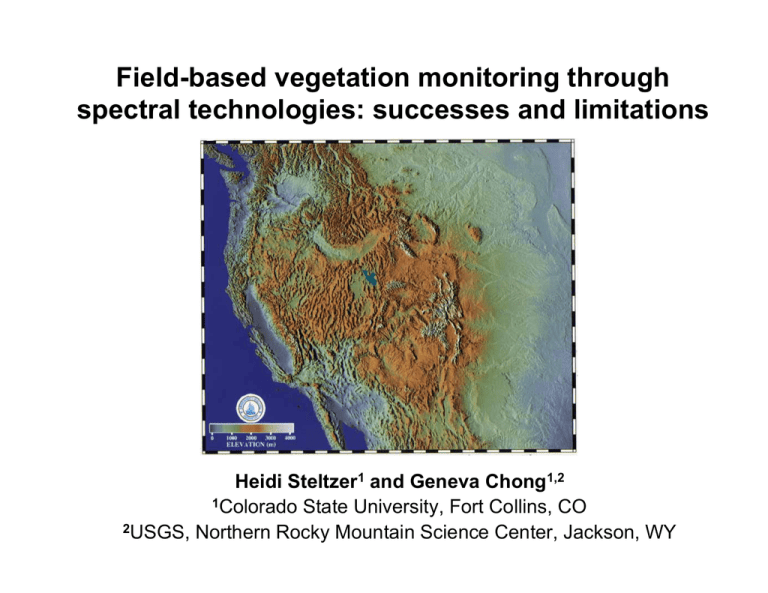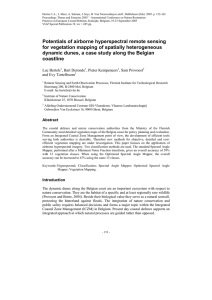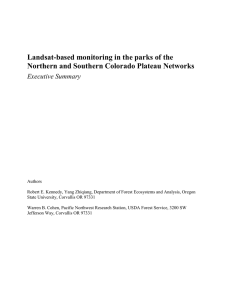Field-based vegetation monitoring through spectral technologies: successes and limitations Heidi Steltzer
advertisement

Field-based vegetation monitoring through spectral technologies: successes and limitations Heidi Steltzer1 and Geneva Chong1,2 1Colorado State University, Fort Collins, CO 2USGS, Northern Rocky Mountain Science Center, Jackson, WY Aspen die-off at low elevations, but expansion at high elevations in the San Juan Mountains New approaches for field-based vegetation monitoring are needed • Observer-based approaches are: – Time-consuming – Costly – Rely on skilled observers Spectral technologies can be used for field-based vegetation monitoring • Non-destructive sampling • Link to remote sensing • Rapid data collection in field Spectral technologies Spectral technologies: measure reflectance of light from the earth’s surface Reflectance varies between green vegetation and soil surfaces Spectral technologies: spectrometers, multi-band sensors, multi-spectral cameras, and RGB cameras Using spectral technologies to monitor vegetation and ecosystem function: successes and limitations • • • Arctic tundra Semi-arid steppe Restored grasslands species composition affects the NDVI-LAI relationship a) 0.8 LAI (m 2 m -2 ) High Arctic Tundra: 0.6 NDVInpvs = 0.21 D. integrifolia S. arctica 0.4 ∆LAIK 0.2 Steltzer and Welker Ecology (2006) 2 -2 ΔLAIK (m m ) 0.0 0.6 0.4 0.2 0.0 0.2 0.4 NDVI 0.6 0.8 High Arctic tundra: LAI estimates from NDVI -2 -1 GEP (μmol CO2 m hr ) correlate to ecosystem function 4 b. 3 2 R2 = 0.82 P < 0.001 1 0 0.0 0.2 0.4 2 0.6 0.8 -2 LAI (m m ) Steltzer et al. JGR-Biogeosciences (2008) Semi-arid steppe: qualitative vs quantitative use of imagery Restored grasslands Restored grasslands: active soil carbon decreased where plant cover was low, but recovered where plant cover was high High plant cover 24 0.45 9 12 15 18 21 24 27 0.40 0.35 0.30 0.25 Active SOC (g m-2) NDVI40 (40 cm radius all) 0.50 low cover high cover 22 20 18 16 0.20 14 4 6 8 10 12 14 Time in CRP (years) Low plant cover 16 18 2 4 6 8 10 12 14 Time in CRP (yrs) 16 18 20 Advantages of near-surface spectral measurements • Spatial – pure pixels – sample within an ecosystem • Temporal – frequent observations – particularly important for phenology • SpecNet – a spectral network – http://specnet.info A picture says 3,932,160 words Acknowledgements • National Science Foundation • USGS • USDA • Tetracam Inc. • Joe DeCant • Jeff Welker • Rich Conant • Fred Hummerich and other Specnetters • Seth Munson Limitations and costs of using spectral technologies • Species diversity • Seedling recruitment • Rare species Alpine tundra: vegetation types Walker et al. Bioscience (1993)







